Famous Personalities
Mother Teresa Quotes – Influential Peace Missionary

As humans, we frequently find ourselves looking for motivation and direction in our lives. We turn to those who have left a significant mark on the world for enlightenment.
Mother Teresa, an influential peace missionary, is one such figure who continues to inspire and touch the hearts of people worldwide. Her words of compassion and love resonate deeply, reminding us of the power of kindness and selflessness.
Through her quotes, Mother Teresa emphasizes the importance of serving others and finding joy in simple acts of kindness. She teaches us to embrace diversity and unity, and to cultivate a heart of gratitude.
Each of her quotes holds within it the transformative power of love and the ability to inspire hope in even the most hopeless situations.
Key Takeaways
- Mother Teresa's mission was to serve the marginalized and offer them compassion and love.
- Compassion has a transformative impact on individuals and communities.
- Love as a foundation for peace.
- Mother Teresa empowered the destitute through various initiatives.
The Power of Compassion
The power of compassion can be seen in the transformative impact it has on both individuals and communities. Empathy, the ability to understand and share the feelings of others, is at the core of compassion. When we put ourselves in someone else's shoes and truly connect with their experiences, we develop a deep sense of empathy that enables us to offer genuine support and care.
Compassion has the power to break down barriers and unite people from different backgrounds. It fosters a sense of understanding and acceptance, creating an environment where kindness and empathy thrive. When individuals and communities prioritize compassion, it establishes a foundation of trust and cooperation that can lead to positive change and growth.
Kindness is a fundamental component of compassion. Simple acts of kindness, whether big or small, have the ability to brighten someone's day and create a ripple effect of positivity. It's through acts of kindness that we can show others that they're valued and loved. Moreover, kindness has the power to inspire others to pay it forward and spread compassion throughout their own communities.
Embracing the Poor and Needy
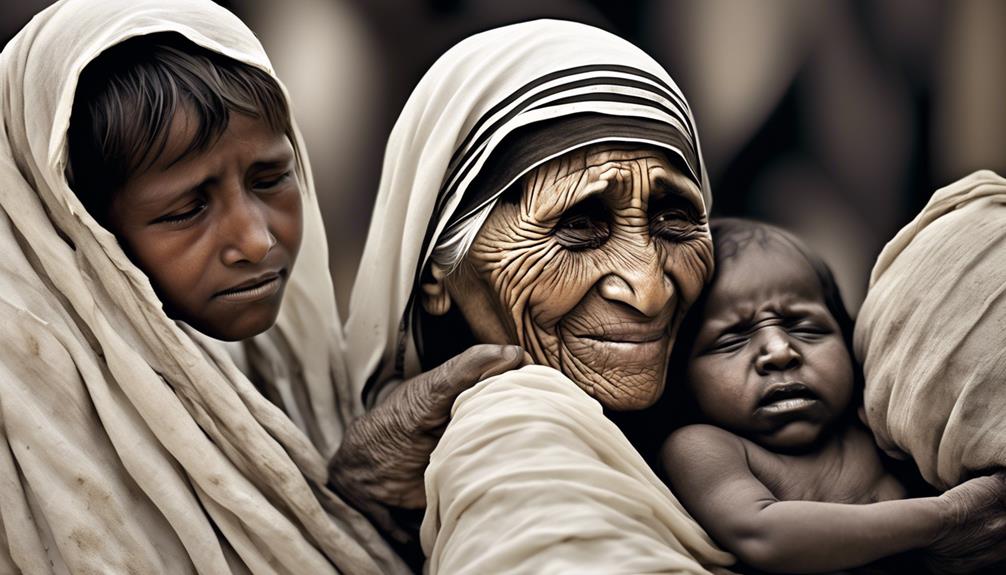
When it comes to embracing the poor and needy, Mother Teresa's impact is profound. Her mission to serve the marginalized wasn't just about providing material support, but also about offering compassion and love to those who felt forgotten by society.
Through her actions, she demonstrated that true compassion isn't just a feeling, but a call to action that empowers the destitute and gives them a sense of dignity and worth.
Serving the Marginalized
Serving the marginalized is an essential aspect of Mother Teresa's work. She wholeheartedly embraced the poor and needy with compassion and dedication. Her mission to empower women and advocate for social justice went hand in hand with her commitment to serving the marginalized.
Here is an imagery of how Mother Teresa served the marginalized:
- She tirelessly walked through the streets, her wrinkled hands reaching out to the destitute, offering them warmth and comfort.
- She provided shelter to the homeless, creating sanctuaries where the marginalized could find solace and protection.
- Mother Teresa's soup kitchens became a lifeline for those who were hungry, offering nourishment to the starving and forgotten.
- She fearlessly stood up against injustice, using her voice to speak for those who'd been silenced by society's prejudices.
Mother Teresa's unwavering dedication to serving the marginalized continues to inspire us to this day.
Compassion in Action
Compassion comes alive as Mother Teresa embraces the poor and needy, demonstrating her unwavering dedication to serving those in need. Her compassionate actions extend beyond just providing material support; she deeply understands the importance of compassion in education and healthcare.
Mother Teresa believed that education was the key to breaking the cycle of poverty and empowering individuals to create a better future for themselves. She established schools and educational programs in impoverished communities, offering children the opportunity to receive an education and escape the cycle of poverty.
Additionally, Mother Teresa recognized the importance of compassion in healthcare. She established clinics and hospitals, providing medical care and support to those who lacked access to proper healthcare.
Mother Teresa's commitment to compassion in education and healthcare showcases her unwavering dedication to improving the lives of the poor and needy.
Empowering the Destitute
Mother Teresa's dedication to empowering the destitute is evident in her unwavering commitment to embracing the poor and needy. Through her work, she actively sought to bring about empowering change and alleviate poverty. Here are four ways in which Mother Teresa embraced the poor and empowered them to overcome their destitution:
- Providing shelter: Mother Teresa established numerous shelters and homes for the destitute, where they could find refuge from the harsh realities of life on the streets.
- Offering healthcare: She recognized the importance of healthcare in breaking the cycle of poverty. Mother Teresa set up clinics and hospitals, providing medical care to those who'd no access to it.
- Educating the marginalized: Mother Teresa believed that education was the key to empowering individuals and communities. She established schools and vocational training centers, giving the poor the opportunity to gain knowledge and skills.
- Promoting dignity and love: Mother Teresa believed in treating every individual with dignity and love. She embraced the poor and destitute, offering them compassion, support, and a sense of belonging.
Through these initiatives, Mother Teresa empowered the destitute, enabling them to break free from the chains of poverty and create a better future for themselves and their communities.
Love as the Foundation of Peace

Love's transformative power is at the core of Mother Teresa's philosophy of peace.
Through her actions and words, she emphasized the importance of spreading love through service to others.
Love's Transformative Power
The transformative power of love in fostering peace is a widely recognized and deeply studied phenomenon. Love has the ability to transcend boundaries and bring people together, creating a sense of unity and understanding. It has the power to heal wounds, soothe conflicts, and mend broken relationships.
Love's impact on peace can be seen through the following four manifestations:
- Compassion: Love opens our hearts to the suffering of others, enabling us to empathize and take action to alleviate their pain.
- Forgiveness: Love allows us to let go of grudges and resentments, promoting reconciliation and harmony.
- Respect: Love teaches us to value and honor the dignity of every individual, fostering mutual respect and peaceful coexistence.
- Empathy: Love enables us to see the world through the eyes of others, promoting understanding and fostering peace.
Spreading Love Through Service
Having explored the transformative power of love in fostering peace, we now turn our attention to the subtopic of 'Spreading Love Through Service' as the foundation of peace. Acts of kindness and love in action are the essence of Mother Teresa's mission to bring peace to the world. Through her selfless service to the poor and destitute, she not only provided them with material aid but also showed them love and compassion. Mother Teresa believed that love, expressed through acts of service, had the power to heal wounds, bridge divides, and bring about lasting peace. This belief is reflected in her famous quote, "It's not how much we give, but how much love we put into giving." By spreading love through service, we can create a ripple effect that has the potential to transform lives and bring about a more peaceful world.
| Love in Action | Acts of Kindness |
|---|---|
| Selfless service | Helping the needy |
| Compassion | Volunteering |
| Empathy | Supporting others |
| Sacrifice | Caring for others |
Love as a Unifying Force
Love, as a unifying force, has the power to transcend boundaries and bring people together in harmony and understanding. It's the foundation upon which peace can be built, promoting harmony and fostering a sense of unity among individuals.
Here are four ways in which love promotes harmony and unity:
- Love breaks down barriers: When we approach others with love and acceptance, we break down the walls that divide us. Love allows us to see beyond superficial differences and recognize our shared humanity.
- Love fosters empathy: The act of loving someone requires us to understand their perspective and feelings. By cultivating empathy, love bridges the gap between individuals and promotes understanding.
- Love promotes forgiveness: Love has the power to heal wounds and promote forgiveness. When we choose to love, we let go of resentment and work towards reconciliation, creating a space for unity to flourish.
- Love inspires collaboration: When love is the driving force behind our actions, we're more willing to work together towards common goals. Love encourages cooperation, enabling us to overcome obstacles and achieve shared objectives.
Serving Others With Selflessness

Serving others with selflessness requires a genuine desire to prioritize the needs and well-being of others above our own. It involves engaging in selfless acts and dedicating our time and effort to serving humanity. Mother Teresa, an influential peace missionary, exemplified this through her unwavering commitment to serving the poor and marginalized.
Selflessness is the cornerstone of Mother Teresa's philosophy. She believed that by putting others first, we can make a meaningful impact on the world. In her own words, she said, 'The greatest disease in the West today isn't TB or leprosy; it's being unwanted, unloved, and uncared for. We can cure physical diseases with medicine, but the only cure for loneliness, despair, and hopelessness is love.' This quote highlights Mother Teresa's belief that serving others with selflessness is a powerful antidote to the pain and suffering that many people endure.
To truly serve others with selflessness, we must cultivate empathy and compassion. It requires us to step outside of our own needs and desires and focus on the well-being of others. Mother Teresa once said, 'Let us always meet each other with a smile, for the smile is the beginning of love.' This simple act of kindness demonstrates how we can serve others by offering them love and compassion, even in the face of adversity.
Finding Joy in Simple Acts of Kindness

When it comes to finding joy in simple acts of kindness, we must recognize the power that these small gestures hold.
While they may seem insignificant in the grand scheme of things, they've the potential to make a profound impact on both the giver and the receiver.
Small Acts, Big Impact
Engaging in small acts of kindness can have a profound impact on both the giver and the recipient, fostering joy and spreading positivity throughout communities. These acts, though seemingly insignificant, carry immense power to transform lives. Here are four ways in which small acts of kindness can create a ripple effect of compassion:
- Brightening someone's day with a genuine smile can uplift their spirits and inspire them to pass on the positivity.
- Offering a listening ear to someone in need can provide comfort and solace, reminding them that they aren't alone.
- Performing random acts of kindness, such as holding the door for someone or helping carry groceries, can create a sense of interconnectedness and foster a sense of community.
- Providing small gestures of appreciation, like writing a heartfelt note or giving a compliment, can boost someone's self-esteem and instill a sense of worthiness.
In a world that can often feel chaotic and divided, these small acts of kindness have the power to heal, unite, and bring about a positive change.
Spreading Kindness Daily
As we continue to explore the profound impact of small acts of kindness, let's now shift our focus to the daily practice of spreading kindness and finding joy in simple acts of kindness.
Spreading positivity through acts of kindness is a powerful way to make a difference in the world. It involves actively seeking opportunities to bring happiness to others through our actions. Whether it's offering a helping hand to someone in need, giving a genuine compliment, or simply listening attentively to someone's story, these small acts can have a ripple effect, inspiring others to do the same.
Acts of kindness in action not only bring joy to those on the receiving end, but they also fill our own hearts with a sense of fulfillment and purpose. By making kindness a daily habit, we can create a more compassionate and harmonious world.
The Power of Compassion
Compassion, the profound ability to empathize and show kindness towards others, holds the power to ignite joy in the simplest acts of kindness. It has the potential to heal wounds, mend broken hearts, and transform lives.
The healing power of compassion can be witnessed in the transformative acts of selflessness that we engage in every day. These acts, though seemingly small, have the ability to create a ripple effect of positivity and love.
Picture a stranger comforting a crying child, a volunteer serving warm meals to the homeless, a friend lending a listening ear to someone in need, or a nurse comforting a patient in pain. These acts of compassion have the power to bring comfort, hope, and happiness to both the giver and the receiver.
Overcoming Darkness With Light

To conquer the depths of despair, Mother Teresa believed in illuminating the world with the power of love and kindness. She understood that darkness can only be overcome by the presence of light, and she dedicated her life to spreading that light to those in need. In her journey of overcoming adversity and finding inner strength, Mother Teresa inspired countless others to do the same.
| Finding Inner Strength | Overcoming Adversity |
|---|---|
| Believing in oneself | Perseverance |
| Seeking support | Resilience |
| Cultivating resilience | Self-belief |
Mother Teresa recognized that finding inner strength is essential in overcoming adversity. She encouraged individuals to believe in themselves and their abilities, emphasizing the importance of self-confidence. Additionally, she emphasized the significance of seeking support from others. By reaching out and connecting with others, individuals can find comfort, guidance, and encouragement during difficult times.
In the face of adversity, Mother Teresa emphasized the importance of perseverance. She believed that it is through perseverance that individuals can overcome challenges and achieve their goals. Furthermore, she highlighted the need for resilience, the ability to bounce back from setbacks and remain steadfast in the pursuit of one's purpose.
Spreading Love in a Broken World

In the midst of a world plagued by brokenness and despair, Mother Teresa tirelessly dedicated herself to spreading the transformative power of love. She understood that love has the ability to heal brokenness and bring hope to those in need. Through her actions and words, she exemplified the essence of kindness, reminding us of the potential for goodness in every human heart.
- Embracing the Vulnerable: Mother Teresa saw the inherent worth in every individual, regardless of their circumstances. She reached out to the most marginalized and neglected members of society, offering them love and support. In doing so, she showed us that kindness knows no boundaries.
- Serving Selflessly: Mother Teresa's life was a testament to selflessness. She dedicated herself to serving others without expecting anything in return. Her actions taught us the power of giving without reservation, reminding us that true kindness requires sacrifice.
- Inspiring Compassion: Mother Teresa's love was contagious. Through her example, she inspired countless individuals to show compassion towards their fellow human beings. She taught us that by spreading kindness, we can create a ripple effect that touches lives far beyond our own.
- Championing Unity: Mother Teresa believed in the power of unity and the strength that can be found in diversity. She worked tirelessly to bridge divides and bring people together, reminding us that healing brokenness requires collective effort.
Mother Teresa's legacy serves as a reminder that even in a broken world, love and kindness have the power to bring healing, hope, and transformation. By following her example, we can all play a part in creating a more compassionate and inclusive society.
Choosing Peace in the Midst of Conflict

When faced with conflict, it can be challenging to maintain inner calm amidst the turmoil. Mother Teresa's teachings remind us of the importance of choosing peace in these moments.
Inner Calm Amidst Turmoil
Amidst the chaos and conflict that surrounds us, finding inner calm and choosing peace can be a challenging yet essential endeavor. It's during these turbulent times that maintaining serenity becomes even more crucial.
Here are four ways to cultivate inner peace and tranquility:
- Practice mindfulness: By being fully present in the moment, we can detach ourselves from the external turmoil and find solace within.
- Cultivate gratitude: Focusing on the blessings in our lives helps shift our perspective and reminds us of the beauty amidst the chaos.
- Engage in self-care: Taking care of our physical, mental, and emotional well-being is essential for finding inner peace. This can include activities such as meditation, exercise, and spending time in nature.
- Seek support: Surrounding ourselves with a supportive community and seeking guidance from mentors or therapists can provide us with the tools and encouragement needed to navigate through the storms of life.
Embracing Nonviolent Solutions
During times of chaos and conflict, embracing nonviolent solutions becomes crucial in our pursuit of inner calm and peace. Promoting conflict resolution through the use of nonviolent communication techniques allows us to address conflicts with empathy, understanding, and respect.
Nonviolent communication emphasizes active listening, expressing our needs and feelings, and seeking win-win solutions. By choosing nonviolence, we create an environment where dialogue and understanding can flourish, fostering a sense of unity and cooperation.
Mother Teresa, an influential peace missionary, understood the power of nonviolent solutions. She believed that peace starts within ourselves and spreads through our actions and interactions with others. By choosing nonviolence, we not only break the cycle of violence but also inspire others to follow the path of peace.
Embracing nonviolent solutions isn't a sign of weakness, but rather a manifestation of our strength, wisdom, and commitment to creating a better world.
The Importance of Forgiveness

The significance of forgiveness can't be understated, as it holds the power to heal wounds, mend broken relationships, and foster personal growth. Forgiveness is a fundamental aspect of the healing process, allowing individuals to release the burden of anger, resentment, and pain that they may carry within themselves. It's an act of letting go, freeing oneself from the negative emotions that can consume and hinder personal development.
To truly understand the importance of forgiveness, it's helpful to consider the following four points:
- Healing the Wounds: Forgiveness has the ability to heal emotional wounds by providing a sense of closure and enabling individuals to move forward with their lives. It allows for the release of negative energy and promotes inner peace.
- Restoring Relationships: Forgiveness can mend broken relationships, fostering reconciliation and restoring trust. It opens the door for communication, understanding, and the rebuilding of connections that may have been damaged.
- Personal Growth: By forgiving others, individuals can experience personal growth and transformation. It allows for self-reflection, introspection, and the opportunity to learn from past experiences. Through forgiveness, one can cultivate empathy, compassion, and resilience.
- Mental and Emotional Well-being: Holding onto grudges and harboring resentment can have detrimental effects on mental and emotional well-being. Forgiveness, on the other hand, can reduce stress, improve mood, and enhance overall psychological health.
Empathy and Understanding for All

After exploring the importance of forgiveness, it is crucial to now shift our focus towards cultivating empathy and understanding for all individuals. Promoting inclusivity and fostering compassion are essential in creating a harmonious and empathetic society. Mother Teresa, an influential peace missionary, understood the power of empathy and believed in the inherent worth of every human being.
To truly understand the significance of empathy and understanding, let us examine the following table:
| Empathy | Understanding |
|---|---|
| Allows us to feel and share the emotions of others | Involves comprehending the thoughts, feelings, and experiences of others |
| Helps us connect with others on a deeper level | Enables us to see things from different perspectives |
| Encourages compassion and kindness | Facilitates effective communication and conflict resolution |
| Promotes inclusivity and acceptance of diverse perspectives | Supports the development of meaningful relationships |
Empathy and understanding go hand in hand, as they both contribute to building a more compassionate and empathetic society. By embracing these qualities, we can break down barriers, bridge divides, and create a sense of unity among all individuals.
Cultivating a Heart of Gratitude

Cultivating a heart of gratitude is a transformative practice that encourages us to recognize and appreciate the abundance and blessings in our lives. It's a conscious effort to shift our focus from what's lacking to what we already have, fostering a sense of contentment and fulfillment.
Expressing gratitude not only benefits our mental and emotional well-being but also has a positive impact on our relationships and overall outlook on life.
To cultivate a heart of gratitude, we can engage in the following practices:
- Keep a gratitude journal: Writing down three things we're grateful for each day helps us to actively acknowledge and appreciate the good in our lives.
- Practice mindfulness: Being present in the moment allows us to fully experience and savor the blessings around us, fostering a deeper sense of gratitude.
- Express gratitude to others: Taking the time to thank and appreciate the people in our lives strengthens our relationships and spreads positivity.
- Count our blessings: Reflecting on the things we often take for granted, such as good health, a roof over our heads, and food on the table, helps us cultivate a sense of gratitude for the basics that many others may lack.
Cultivating a heart of gratitude is a lifelong journey that requires consistent effort and practice. By incorporating these habits into our daily lives, we can develop a mindset of appreciation and cultivate a deeper sense of contentment and joy.
Embracing Diversity and Unity
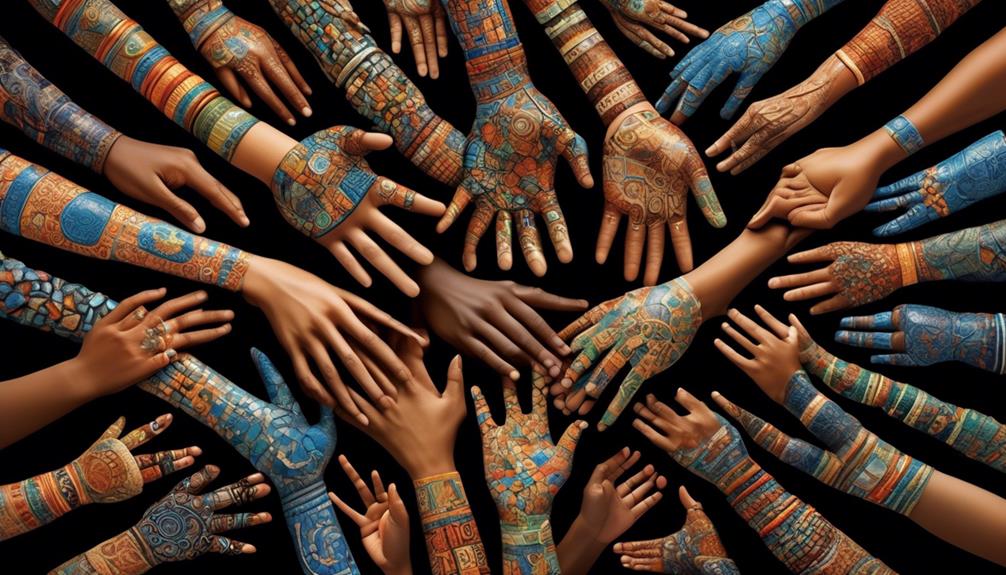
As we continue our exploration of personal growth and development, it's essential to shift our focus towards the importance of embracing diversity and unity in our lives.
Compassion and acceptance are key components in fostering unity and harmony among individuals and communities.
Embracing diversity means acknowledging and appreciating the differences that exist among us, whether they're related to race, religion, culture, or any other aspect of identity. It's about recognizing that diversity enriches our lives and contributes to a vibrant and inclusive society. When we embrace diversity, we open ourselves up to new perspectives, ideas, and experiences that can broaden our horizons and deepen our understanding of the world.
At the heart of embracing diversity lies compassion and acceptance. Mother Teresa once said, 'If we've no peace, it's because we've forgotten that we belong to each other.' These powerful words remind us of the interconnectedness of humanity and the importance of treating others with kindness and empathy. Through compassion, we can bridge the gaps that separate us and foster a sense of unity and belonging.
Fostering unity and harmony requires active engagement and a commitment to building bridges instead of walls. It involves creating spaces where everyone feels valued and included, regardless of their differences. By promoting dialogue, understanding, and respect, we can create a society that celebrates diversity and works towards a common goal of peace and harmony.
The Transformative Power of Love

Love has the transformative power to inspire, heal, and unite individuals and communities. It's a force that transcends boundaries and brings about profound change.
Here are four ways in which love's transformative impact can be seen:
- Healing through love: Love has the ability to heal emotional wounds and bring solace to those who are hurting. It can provide a sense of comfort and belonging, allowing individuals to find strength in their vulnerability and overcome their pain.
- Creating empathy and understanding: Love fosters empathy, enabling us to see beyond our own perspectives and truly connect with others. It breaks down barriers of prejudice and discrimination, helping us to understand and appreciate different cultures, backgrounds, and experiences.
- Inspiring acts of kindness and compassion: Love motivates us to act with kindness and compassion towards others. It compels us to extend a helping hand to those in need, to uplift and support one another, and to work towards the betterment of our communities.
- Uniting diverse communities: Love has the power to unite people from diverse backgrounds and bring them together in harmony. It promotes inclusivity, respect, and acceptance, creating a sense of unity and shared purpose among individuals and communities.
Inspiring Hope in Hopeless Situations

The transformative power of love extends beyond healing, empathy, acts of kindness, and uniting diverse communities; it also has the ability to inspire hope in the midst of seemingly hopeless situations. When faced with adversity and despair, it is often the presence of love and compassion that ignites a spark of resilience within us, enabling us to find purpose and carry on. Mother Teresa, an influential peace missionary, understood this concept deeply and dedicated her life to inspiring resilience and finding purpose in the most desperate of circumstances.
In her work with the poor and marginalized, Mother Teresa encountered countless individuals who had lost all hope. Yet, through her unwavering love and unwavering commitment to serving others, she was able to uplift and inspire them. Mother Teresa's words and actions served as a beacon of hope, reminding us that even in the darkest of times, there is always a glimmer of light to hold onto.
To illustrate the impact of inspiring hope, consider the following table:
| Hopeless Situation | Inspired Resilience | Finding Purpose |
|---|---|---|
| Poverty | Volunteer work | Helping others |
| Illness | Support groups | Advocacy |
| War | Reconciliation | Peacebuilding |
Through acts of inspired resilience and finding purpose, individuals can rise above their circumstances and create positive change. Mother Teresa's legacy serves as a powerful reminder that no matter how bleak a situation may seem, love and hope have the power to transform lives and bring about a better tomorrow.
Frequently Asked Questions
How Did Mother Teresa's Mission of Peace and Compassion Impact the Lives of the Poor and Needy?
Mother Teresa's mission of peace and compassion had a profound impact on the lives of the poor and needy. Through her selfless work, she empowered marginalized communities and provided them with a sense of hope and dignity.
Can You Provide Examples of Simple Acts of Kindness That Mother Teresa Believed Could Bring Joy to Others?
Random acts of kindness are powerful tools that can bring joy to others. Mother Teresa firmly believed in the transformative power of these acts. She believed that even the simplest acts, such as offering a smile or lending a helping hand, could make a significant impact on someone's life.
How Did Mother Teresa Overcome Darkness and Bring Light to Those She Served?
We often wonder how Mother Teresa overcame darkness and brought light to those she served. Her impact on global poverty alleviation efforts is undeniable. Through her selfless acts of kindness and unwavering dedication, she uplifted the lives of countless individuals.
Her legacy continues to inspire and guide us in the modern world. Mother Teresa's ability to find light in even the darkest of situations is a testament to her unwavering faith and compassion. She truly was a beacon of hope for those in need.
In What Ways Did Mother Teresa Spread Love in a Broken World?
In our broken world, Mother Teresa spread love in various ways. She devoted her life to helping the poor and needy, making a significant impact on their lives. Through her selfless acts of kindness and compassion, she provided them with the love and care they desperately needed.
Mother Teresa's work extended beyond just providing physical aid; she also offered emotional support and spiritual guidance. Her dedication to spreading love and uplifting the less fortunate serves as an inspiring example for us all.
How Did Mother Teresa Inspire Hope in Hopeless Situations?
In hopeless situations, Mother Teresa inspired us with her unwavering faith and compassion. She showed us that even in the darkest of times, there's always a glimmer of hope.
Through her selfless acts of kindness and her dedication to serving the poor and the marginalized, she demonstrated that hope can be found by reaching out to those in need.
Her inspiring example continues to remind us that we can make a difference and bring hope to the world, one act of love at a time.
How Do Joyce Meyer’s Quotes Compare to Mother Teresa’s Quotes on Peace and Missionary Work?
Joyce Meyer, a famous quotes speaker, predominantly focuses on personal transformation and inner peace. In contrast, Mother Teresa’s quotes on peace and missionary work highlight the importance of selfless service and compassion towards others. While both influential figures have distinct perspectives, their quotes inspire individuals in different ways, offering diverse insights into the pursuit of peace and missionary work.
Conclusion
In conclusion, Mother Teresa's quotes serve as a powerful reminder of the transformative power of love and compassion.
Her unwavering dedication to serving the poor and needy, embracing diversity, and inspiring hope in hopeless situations has made her an influential peace missionary.
Through simple acts of kindness and selflessness, she's shown us the importance of finding joy and gratitude in our lives.
Mother Teresa's legacy continues to inspire and challenge us to make a positive impact in our world today.
Joy, as our Editor in Chief, ensures the highest standard of content. Her talent in writing is complemented by her attention to detail and passion for literature and culture. Joy’s expertise and love for the English language shine through in her editorial work, making each piece a testament to quality and clarity.
Art and Creativity Quotations
7 Best Artist Quotes Championing Gender Equality
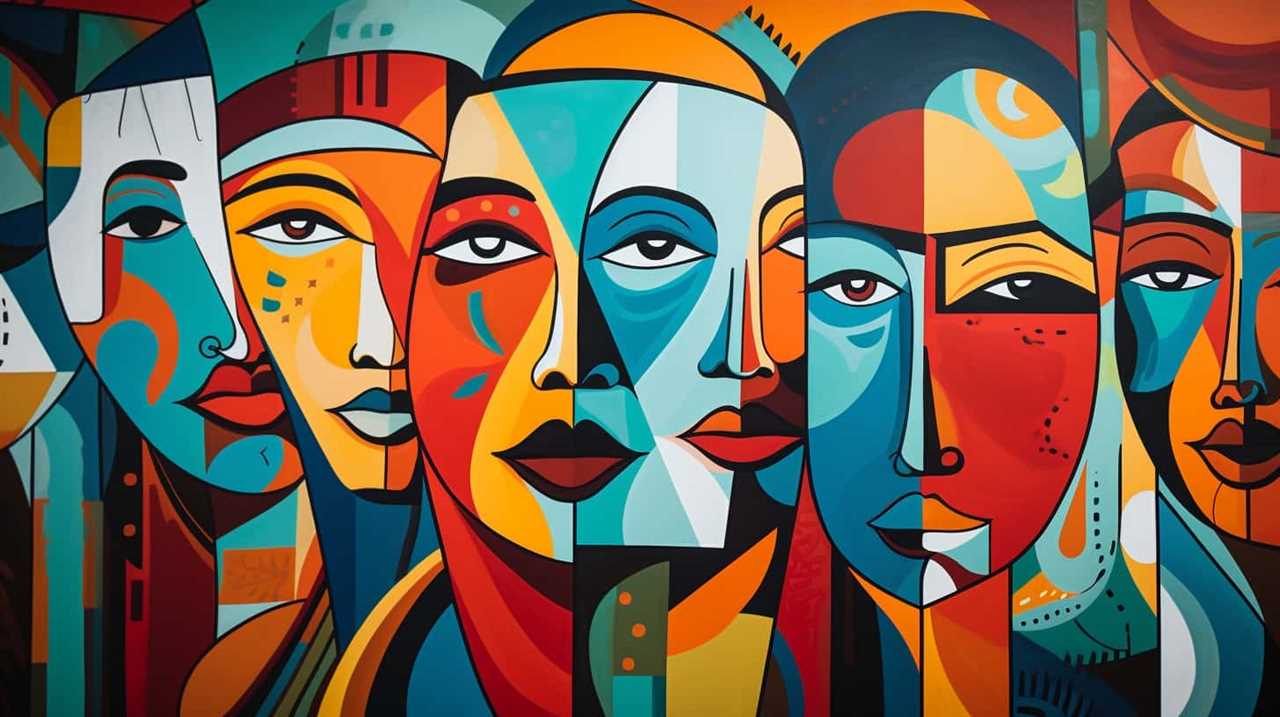
In a world where inequality persists, we highlight the powerful voices of artists advocating for gender equality. These innovative creators inspire us with their words and artistic expressions, motivating us to challenge societal norms and overcome oppression.
Yoko Ono, Tracey Emin, Judy Chicago, Guerrilla Girls, Mickalene Thomas, Jenny Holzer, and Shirin Neshat are among the artists who fearlessly wield their art as a weapon of change. With their poignant quotes, they pierce through the walls of societal constraints and inspire us to strive for a future where equality reigns supreme.
Together, let us delve into their empowering messages and join the movement towards liberation and true equality.
Key Takeaways
- Yoko Ono and Tracey Emin actively advocate for gender equality and challenge societal norms through their art.
- Tracey Emin and Judy Chicago have had a profound impact on feminism and the art world, sparking conversations about gender equality, women’s rights, and celebrating women’s achievements.
- Art serves as a powerful tool for breaking gender stereotypes, promoting inclusivity, and creating a more equal and liberated society.
- Artists like Guerrilla Girls, Mickalene Thomas, Jenny Holzer, and Shirin Neshat use their art to expose discriminatory practices, confront biases, and inspire action for gender equality.
Yoko Ono’s Powerful Words
Yoko Ono’s powerful words resonate with us as she speaks out and champions gender equality. Her activism and influence have left an indelible mark on the fight for gender equality. Ono has been a vocal advocate for women’s rights, using her platform as an artist to raise awareness and inspire change. Through her art, she challenges societal norms and encourages us to question the status quo.
One of Ono’s most iconic statements is ‘Woman is the N***** of the World,’ a phrase that confronts the intersectionality of gender and race and highlights the oppression faced by women. This provocative statement forces us to confront the systemic inequalities that exist and pushes us to challenge them.
Ono’s influence extends beyond her words. She’s actively worked to create spaces and opportunities for women in the art world, advocating for equal representation and recognition. By breaking down barriers and opening doors, she’s paved the way for future generations of female artists.
As we delve deeper into the topic of gender equality, it’s important to acknowledge the impact Yoko Ono has had on this conversation. Her activism and unwavering commitment to equality serve as a powerful reminder of the work that still needs to be done.
Transitioning into the subsequent section about Tracey Emin on gender equality, we continue to explore the voices that shape this movement.
Tracey Emin on Gender Equality
Tracey Emin’s contributions to feminist art have had a profound impact on the art world.
Through her provocative and deeply personal works, she challenges societal norms and breaks down gender stereotypes.
Emin’s unapologetic exploration of femininity and sexuality serves as a powerful tool for advocating gender equality and empowering women to embrace their own narratives.
Emin’s Feminist Art
As we delve into the topic of Emin’s feminist art and her views on gender equality, it becomes evident that her work is a powerful expression of the ongoing struggle for gender parity.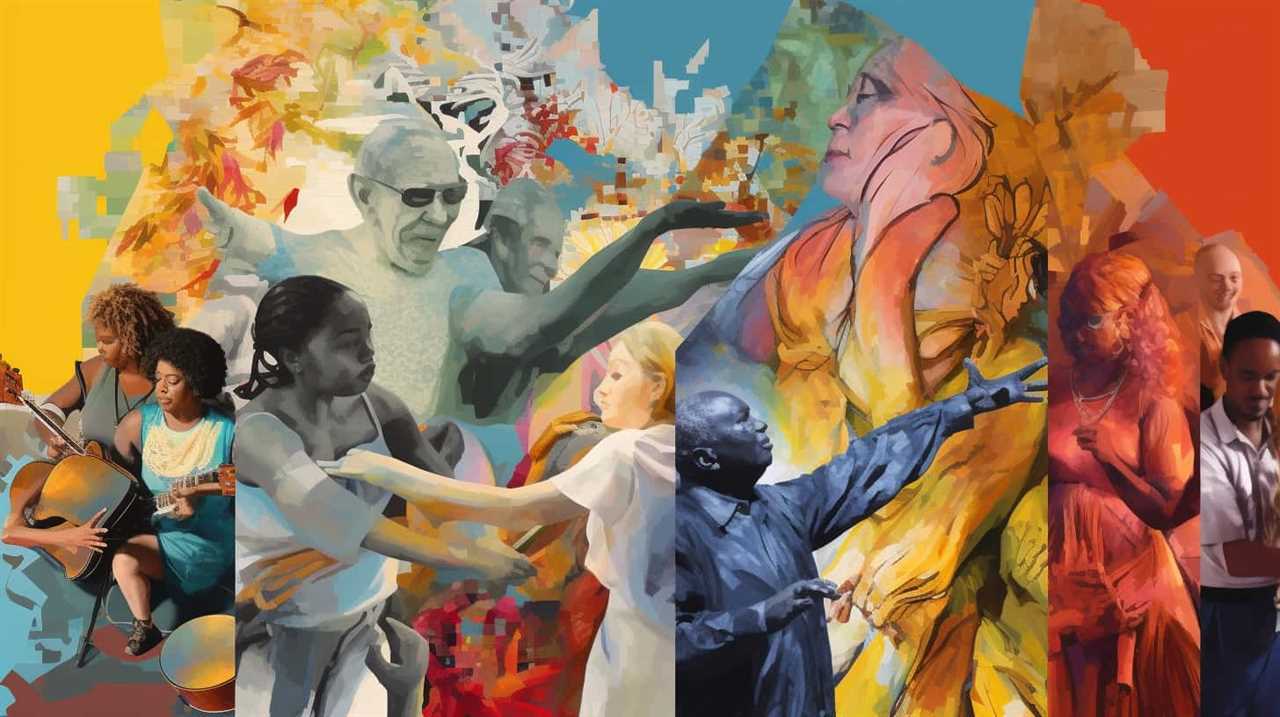
Emin’s art has had a significant impact on the feminist movement, challenging societal norms and shedding light on the challenges faced by artists in addressing gender equality.
Through her bold and provocative pieces, she confronts issues such as sexual autonomy, objectification, and the male gaze.
Emin’s artwork invites viewers to confront uncomfortable truths and question long-standing patriarchal structures.
By exploring her own personal experiences and emotions, she creates a space for dialogue and reflection.
Emin’s feminist art serves as a powerful catalyst for change, inspiring others to challenge gender inequality and strive for liberation.
Impact on Art World
In our exploration of gender equality in the art world, it is evident that Tracey Emin’s impact has been profound. Her work has not only challenged societal norms but also sparked important conversations about the representation of women in art. Emin’s unapologetic exploration of her own experiences and emotions has given a voice to countless women who have felt silenced or marginalized. Through her art, she has brought attention to the often overlooked issues faced by women, such as sexual violence and reproductive rights. Emin’s bold and raw approach has not only left a lasting impression on the art world but has also had a significant impact on society as a whole. Her fearless portrayal of female experiences has ignited a powerful movement towards greater gender equality and representation in art.
| Impact on Society | Representation in Art |
|---|---|
| Emin’s work has sparked important conversations about gender equality and women’s rights in society. | Emin’s art challenges traditional notions of representation, providing a platform for women’s experiences to be seen and heard. |
| Her bold and raw approach has brought attention to often overlooked issues faced by women. | By exploring her own experiences and emotions, Emin gives a voice to countless women who have felt silenced or marginalized. |
| Emin’s art has contributed to a larger movement towards greater gender equality and representation. | Through her work, she has paved the way for more diverse and inclusive perspectives in the art world. |
Breaking Gender Stereotypes
We artists challenge gender stereotypes through our bold and unapologetic exploration of societal norms surrounding gender equality. Our art serves as a powerful tool for breaking stereotypes and promoting inclusivity.
Artists like Tracey Emin have played a crucial role in challenging traditional gender roles through their work. Emin’s art confronts the limiting expectations placed on women and encourages a more inclusive understanding of gender. By boldly expressing her own experiences and emotions, Emin breaks free from the stereotypes that confine and marginalize women.

Through her art, she promotes inclusivity by challenging the notion that gender is binary and fixed. Emin’s work reminds us that breaking stereotypes isn’t only an act of rebellion, but also a necessary step towards creating a more equal and liberated society.
The Feminist Perspective of Judy Chicago
Judy Chicago’s feminist perspective has had a profound impact on the art world and the feminist movement as a whole.
Her art, particularly her iconic installation ‘The Dinner Party,’ challenged traditional gender roles and celebrated women’s achievements throughout history.
Despite her significant contributions, Chicago faced numerous challenges and backlash for her bold and unapologetic exploration of gender equality, highlighting the ongoing struggle for women’s rights and the resistance faced by feminist artists.
Chicago’s Impact on Feminism
The feminist perspective of artist Judy Chicago has had a profound impact on feminism, particularly in relation to Chicago’s contributions to the art world. Chicago’s feminist movement and her pioneering work in feminist art have challenged societal norms and paved the way for greater gender equality. Through her artwork, Chicago has brought attention to women’s experiences, highlighting the struggles and triumphs that have historically been overlooked. Her iconic installation, "The Dinner Party," celebrates the achievements of women throughout history, reclaiming their stories and giving them a place at the table. Chicago’s bold and unapologetic approach has inspired a new generation of feminist artists and activists, encouraging them to use their creativity as a tool for social change. Her work has ignited important conversations about gender, power, and representation, and continues to shape the feminist art movement in Chicago and beyond.
| Artist | Impact on Feminism | Contribution to the Art World |
|---|---|---|
| Judy Chicago | Challenged societal norms | Brought attention to women’s experiences |
| Celebrated achievements of women | Inspired a new generation of artists | |
| Ignited important conversations | Shaped the feminist art movement | |
Challenges Faced by Chicago
As we delve into the challenges faced by Chicago in her feminist perspective, it becomes evident that her bold and unapologetic approach to art hasn’t come without obstacles.
Chicago’s progress in championing gender equality has been met with resistance and criticism from various quarters. Some of the challenges she’s faced include:
- Patriarchal backlash: Chicago’s unconventional and explicit artwork challenged traditional notions of femininity, leading to patriarchal backlash and censorship attempts.
- Marginalization within the art world: Despite her groundbreaking contributions, Chicago faced marginalization within the male-dominated art world, with her work often being dismissed or overlooked.
- Lack of institutional support: Chicago struggled to secure funding and exhibition space for her ambitious projects, highlighting the systemic barriers faced by women artists.
- Misunderstanding and misinterpretation: Chicago’s work, which aimed to celebrate female experiences, was at times misinterpreted as divisive or exclusionary, hindering broader understanding of her feminist goals.
Despite these challenges, Chicago’s unwavering dedication to gender equality has left an indelible mark on the art world, inspiring future generations to challenge societal norms and push for inclusivity and liberation.
Guerrilla Girls: Advocates for Gender Equality
Since the 1980s, we’ve been relentless advocates for gender equality, the Guerrilla Girls. With our activism strategies and impactful presence in the contemporary art scene, we’ve actively fought against the patriarchal norms and inequalities that persist within the art world.
The Guerrilla Girls emerged as a collective of anonymous female artists who wore gorilla masks to protect their identities while highlighting the gender disparities in the art world. Through provocative posters, billboards, and public interventions, we’ve challenged the male-dominated art institutions and exposed the discriminatory practices that limit opportunities for women artists.
Our bold and audacious approach has had a profound impact on the contemporary art scene. By raising awareness and provoking conversations, we’ve forced the art world to confront its biases and acknowledge the need for change. Our activism has inspired countless artists, curators, and institutions to question their own practices and strive for greater inclusivity.
Furthermore, our work has helped to create a platform for underrepresented artists, particularly women and artists of color, to have their voices heard. We’ve been instrumental in breaking down barriers and creating opportunities for marginalized artists to showcase their work and contribute to the art discourse.
Celebrating Equality With Mickalene Thomas
We have celebrated gender equality with Mickalene Thomas. Her artwork beautifully captures the essence of celebrating female empowerment and the art of inclusivity. Thomas’s work challenges traditional notions of beauty and femininity, showcasing the diverse experiences and identities of women.
Through her use of vibrant colors and bold patterns, Thomas creates a visual language that celebrates the unique stories and voices of women. Her art invites viewers to engage with the complexities of gender, race, and sexuality, fostering a sense of inclusivity and understanding.
In celebrating equality, Mickalene Thomas reminds us of the power of representation. Her work serves as a powerful tool for amplifying marginalized voices and challenging societal norms. By showcasing women of all shapes, sizes, and backgrounds, Thomas encourages us to embrace our individuality and celebrate the beauty in our differences.
In an art world that has historically been dominated by male artists, Thomas’s work stands as a testament to the importance of diverse perspectives. Her art challenges the status quo and paves the way for a more inclusive and equitable future, where every voice is heard and celebrated.
Jenny Holzer’s Provocative Statements
Let’s delve into Jenny Holzer’s thought-provoking statements on gender equality. Holzer, an American artist known for her controversial art, has made a significant impact with her powerful and provocative statements. Her work challenges societal norms and sheds light on the inequalities faced by women. Holzer’s art often incorporates text, displayed in public spaces, that confronts viewers and forces them to question their own beliefs and biases.
One of Holzer’s most famous statements, ‘Abuse of power comes as no surprise,’ encapsulates the influence of her art. By highlighting the systemic power imbalances that perpetuate gender inequality, she calls attention to the need for change. Holzer’s words resonate with an audience that desires liberation, as they challenge the status quo and disrupt the complacency surrounding gender equality.
Holzer’s statements not only provoke thought but also spark conversation and inspire action. By exposing the uncomfortable truths about gender inequality, she encourages individuals to examine their own behavior and work towards creating a more equitable society. Her art serves as a catalyst for change, urging society to confront its own biases and strive for a future where gender equality is the norm.
The Empowering Voice of Shirin Neshat
The empowering voice of Shirin Neshat amplifies the struggle for gender equality through her captivating art and thought-provoking statements. Neshat, an Iranian artist, uses her empowering art to challenge societal norms and advocate for women’s rights. Her work is deeply rooted in her personal experiences and explores themes of identity, gender, and cultural influence.
Neshat’s art often features powerful imagery of veiled women, symbolizing the oppressive constraints placed upon women in her native Iran. Through her photographs and videos, she confronts the viewer with the realities faced by women in patriarchal societies, sparking conversations about gender equality and female empowerment.
Neshat’s cultural influence extends beyond her art. As a prominent figure in the art world, she’s used her platform to raise awareness about the challenges faced by women globally. Her thought-provoking statements challenge conventional notions of femininity and encourage dialogue about gender roles and societal expectations.
Through her empowering art and cultural influence, Shirin Neshat continues to be a voice for gender equality, inspiring others to question and challenge the status quo. Her work serves as a reminder of the power of art to provoke change and promote liberation.
Frequently Asked Questions
How Did Yoko Ono Become an Influential Figure in the Fight for Gender Equality?
Yoko Ono’s influential role in the fight for gender equality was shaped by her early activism and collaboration with the feminist art movement. Her dedication and innovative approach have made her a powerful force for change.
What Is the Significance of Tracey Emin’s Artwork in Relation to Gender Equality?
Tracey Emin’s artwork holds great significance in the fight for gender equality. Her raw and honest expressions challenge societal norms and empower women to embrace their true selves. Emin’s impact on gender equality is undeniable.
How Does Judy Chicago’s Feminist Perspective Inform Her Art and Activism?
Judy Chicago’s feminist perspective heavily influenced her art and activism. Her groundbreaking work, ‘The Dinner Party,’ challenged traditional notions of gender roles and celebrated women’s achievements throughout history. This piece became an iconic symbol of feminist art in the 1970s, inspiring and empowering countless individuals in the feminist movement.
What Are Some Notable Achievements of the Guerrilla Girls in Advocating for Gender Equality?
The Guerrilla Girls have made notable achievements in advocating for gender equality. Their activism has had a profound impact on the art world, challenging the male-dominated narrative and pushing for inclusivity and representation.
How Does Mickalene Thomas Celebrate and Promote Equality Through Her Artwork?
Mickalene Thomas celebrates and promotes equality through her artwork by celebrating diversity and empowering women. Her art captures the beauty, strength, and complexity of women, challenging societal norms and inspiring liberation.

Conclusion
In exploring the powerful words of artists championing gender equality, we’ve delved into a world of thought-provoking perspectives and empowering voices.
Like a vibrant tapestry, these artists have woven together their experiences, insights, and observations into a patchwork of awareness and advocacy.
Through their art and words, they’ve shattered stereotypes, challenged societal norms, and opened doors for a more inclusive and equal world.
Their voices echo like a melody, inspiring us all to continue the fight for gender equality.
Lauren’s talent in writing is matched by her passion for storytelling. Her love for books and deep understanding of culture and entertainment add a distinct flavor to her work. As our media and press contact, Lauren skillfully bridges the gap between afterQuotes and the broader media landscape, bringing our message to a wider audience.
Philosophers Quotations
Top Philosophy of Technology Quotes Unveiled

Would you like to explore the captivating realm of technology philosophy?
In our quest for innovation, we have uncovered a treasure trove of thought-provoking quotes that will challenge your perception of the relationship between humans and machines.
Picture this: a renowned philosopher discussing the ethical implications of artificial intelligence, or a thought experiment that questions the role of science in shaping technological advancements.
These quotes will inspire you to think critically about the nature of technology and its impact on our lives.
Join us as we unveil the top philosophy of technology quotes that will ignite your curiosity and push the boundaries of innovation.
Key Takeaways
- Technology is a powerful tool that can enhance our lives, but it also has existential implications and raises questions about our sense of self and authentic identity.
- Technology has a significant impact on social relationships, shaping the way we connect, communicate, and interact with others. It can both enhance and hinder social connections, so balancing technology use with meaningful human interactions is crucial.
- Ethical considerations are essential in the development and use of technology, including issues of privacy, data security, accessibility, and minimizing environmental consequences.
- The interplay between science and technology is crucial for innovation and societal progress. Science provides the knowledge and understanding for technological development, while technology pushes the boundaries of scientific knowledge and challenges existing theories.
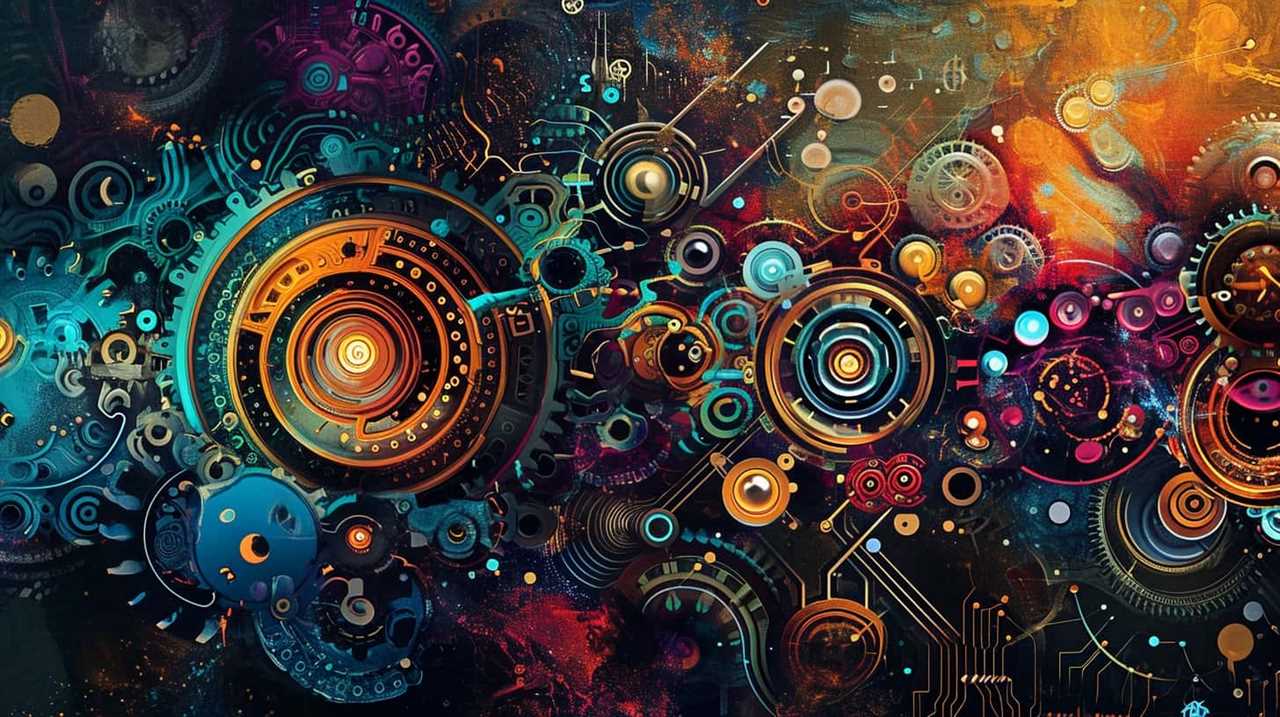
The Nature of Technology
In our exploration of the philosophy of technology, we’ll delve into the essence and characteristics of technology itself. Technology, in its simplest form, can be seen as a tool or an instrument created by humans to solve problems and enhance our lives. However, when we engage in a deeper philosophical analysis of technology, we uncover its existential implications and the profound impact it has on our existence.
Technology has become an integral part of our daily lives, shaping the way we communicate, work, and interact with the world around us. It has transformed the very fabric of our society, blurring the boundaries between the physical and virtual realms. But what does this mean for our sense of self? How does technology shape our understanding of identity and our place in the world?
Existential implications arise when we consider the ways in which technology mediates our experiences and influences our perception of reality. As we become increasingly reliant on technology, we must question whether it’s enhancing or detracting from our human essence. Are we losing touch with our authentic selves as we become more immersed in a digital world?
This philosophical analysis of technology forces us to confront the complex relationship between humanity and its creations. It challenges us to think critically about the role technology plays in defining who we’re and how we navigate our existence. As we continue to innovate and push the boundaries of what’s possible, we must also consider the profound philosophical questions that arise from our ever-evolving technological landscape.

The Role of Science in Technology
Science plays a crucial role in shaping and advancing technology. It serves as the foundation upon which innovation thrives, pushing the boundaries of what is possible and propelling society forward. The role of science in technology is two-fold: it provides the knowledge and understanding necessary to develop new technologies, and it also serves as a guide for ethical considerations in their creation and use.
Scientific progress fuels technological advancements by uncovering new principles, theories, and laws that underpin the development of innovative solutions. Through rigorous experimentation, observation, and analysis, scientists expand our understanding of the natural world and provide the building blocks for technological innovation. This constant pursuit of knowledge allows us to unlock the full potential of technology and create solutions that address the complex challenges we face.
However, the role of ethics must also be considered in the development and application of technology. As science progresses, it is essential to reflect on the ethical implications of our technological advancements. This requires us to question not only what we can do, but also what we should do. Ethical considerations ensure that technology is used responsibly, to benefit society as a whole while minimizing harm.
To better illustrate the relationship between science and technology, let’s consider the following table:
| Science | Technology |
|---|---|
| Provides the knowledge and understanding necessary for innovation | Applies scientific knowledge to create practical solutions |
| Driven by curiosity and the pursuit of knowledge | Driven by problem-solving and meeting societal needs |
| Explores the natural world and uncovers new principles and laws | Utilizes scientific knowledge to develop new tools, products, and systems |
| Informs ethical considerations and responsible use of technology | Requires ethical considerations to guide development and use |
| Expands our understanding of the world and propels technological advancements | Transforms scientific knowledge into practical applications for societal progress |
The interplay between science and technology is integral to our quest for innovation. As we continue to make scientific discoveries, we must harness this knowledge and apply it ethically to shape a future where technology serves the greater good. By recognizing the role of ethics in scientific progress, we can ensure that our technological advancements align with our values and contribute to a more sustainable and equitable world.

Human-Machine Interaction
As we explore the intriguing realm of Human-Machine Interaction, we’re confronted with the ethical implications of AI and its impact on social relationships.
The rise of artificial intelligence has sparked intense debates about the boundaries and responsibilities of technology.
From autonomous vehicles making life-or-death decisions to algorithms shaping our online experiences, we find ourselves questioning the extent to which we should rely on machines and how they may reshape the fabric of our society.
Ethical Implications of AI
One can’t underestimate the ethical implications of AI in our interaction with machines. As technology continues to advance, it’s crucial to consider the ethical responsibilities that come with the development and usage of AI.
One key concern is algorithmic bias, which refers to the potential for AI systems to perpetuate and amplify existing biases in society. This bias can lead to unfair treatment and discrimination, impacting individuals and communities. It’s our ethical responsibility to ensure that AI algorithms are trained and tested in a way that minimizes bias and promotes fairness and equality.
As we navigate the complex landscape of AI, we must prioritize ethical considerations and actively work towards creating AI systems that are transparent, accountable, and aligned with our values. Only then can we truly harness the transformative potential of AI while safeguarding against its unintended consequences.
Impact on Social Relationships
Technology’s impact on social relationships necessitates a thoughtful evaluation of human-machine interaction. As we increasingly rely on technology for communication and connection, it’s crucial to consider the consequences it has on our social dynamics.
Two key areas that highlight this impact are online dating and cyberbullying.
Online dating has revolutionized the way people meet and form romantic relationships. It offers a convenient platform to connect with potential partners, expanding the possibilities of finding love. However, it also raises questions about authenticity and trust. How can we truly know someone through a digital interface? Are we sacrificing genuine human connection for the convenience of swiping right?
On the other hand, cyberbullying has emerged as a dark consequence of increased online interaction. The anonymity provided by technology has given rise to a new form of harassment, causing significant harm to individuals and communities. It challenges us to find ways to protect and support victims while also addressing the root causes of this behavior.

Ethics and Technology
As we explore the subtopic of Ethics and Technology, we must confront the moral implications that arise from our increasingly interconnected world.
The ethical use of artificial intelligence is a pressing concern, as we must ensure that these technologies prioritize human well-being and autonomy.
Additionally, the issue of privacy in the digital age demands our attention, as we navigate the delicate balance between convenience and safeguarding personal information.
Moral Implications of Technology
We are concerned with the ethical implications of technology. As technology continues to advance at an unprecedented pace, it becomes increasingly important to consider the moral responsibility and ethical decision-making that accompany these advancements.
Here are four key points to consider:
- Impact on Society: Technology has the power to shape society in profound ways. From social media algorithms that influence our beliefs to automation that affects employment, we must carefully consider the ethical implications of these technologies.
- Privacy and Data Security: With the rise of digital platforms, the collection and use of personal data have become prevalent. It’s crucial to address the ethical concerns surrounding privacy and data security, ensuring that individuals’ rights are protected.
- Equity and Access: Technology has the potential to bridge gaps and empower marginalized communities. However, we must ensure that advancements are accessible to all and don’t exacerbate existing inequalities.
- Environmental Consequences: The production and use of technology can have significant environmental impacts. Ethical considerations should be made to minimize harm and promote sustainable practices.
In navigating the moral implications of technology, it’s essential to prioritize ethical decision-making, promoting innovation that aligns with our values and respects the well-being of individuals and the planet.
Ethical Use of AI
The ethical use of AI is a pressing concern in our rapidly advancing technological landscape. As artificial intelligence continues to evolve and permeate various aspects of our lives, it becomes imperative to address the ethical implications that arise from its use.
AI ethics refers to the moral principles and guidelines that govern the development and deployment of artificial intelligence systems. Responsible AI development requires careful consideration of issues such as privacy, bias, accountability, and transparency.
It’s crucial to ensure that AI systems are designed to promote fairness, mitigate biases, and respect individual autonomy. As we strive for innovation and progress, it’s essential to remember that ethical considerations should always be at the forefront of AI development, guiding us towards a future where technology serves humanity in a responsible and beneficial manner.
Privacy in Digital Age
Privacy in the digital age is a fundamental concern when considering the ethical implications of technology. As our lives become increasingly intertwined with digital platforms and devices, it’s crucial to examine the ways in which our personal information is collected, stored, and used.
Here are four key points to consider:
- Data ownership: In the digital age, our personal data is often collected without our explicit consent. This raises important questions about who owns our data and how it can be used by corporations and governments.
- Surveillance capitalism: The rise of surveillance capitalism has further eroded our privacy. Companies profit by collecting and analyzing vast amounts of personal data, often without our knowledge or consent.
- Ethical implications: The widespread collection and use of personal data raise ethical concerns, including issues of autonomy, consent, and the potential for discrimination.
- Balancing privacy and innovation: While privacy is essential, it’s important to strike a balance between protecting personal information and promoting innovation. Finding ways to safeguard privacy without stifling technological progress is a challenge we must address.

Technological Determinism
Examining the impact of technology on society, we explore the concept of Technological Determinism. This theory suggests that technology is the primary driver of societal change and that it shapes the way we think, behave, and interact with one another. According to technological determinists, advancements in technology have profound societal consequences that are beyond our control.
In today’s fast-paced world, technology’s impact on society is undeniable. It has revolutionized the way we communicate, work, and live our lives. The rise of social media, for example, has transformed the way we connect with others, share information, and form opinions. The advent of smartphones has made information accessible at our fingertips, changing the way we consume news, shop, and even navigate our surroundings.
However, technological determinism raises important questions about agency and responsibility. If technology is the main driving force behind societal change, what role do individuals and institutions play in shaping that change? Are we simply passive recipients of technological advancements, or do we have the power to influence the direction and impact of technology on society?
As we navigate the ever-evolving technological landscape, it’s crucial to critically examine the societal consequences of technological determinism. While technology has the potential to empower and improve our lives, it also has the power to exacerbate existing inequalities and create new challenges. By understanding and actively shaping the impact of technology, we can ensure that it serves the greater good and promotes a more equitable and inclusive society.

The Impact of Technology on Society
When considering the impact of technology on society, two key points come to mind: the influence of social media and the implications of technological advancements on employment.
Social media has revolutionized the way we communicate and connect, shaping our interactions and even our sense of self.
Additionally, as technology advances at an unprecedented rate, there’s growing concern about the displacement of jobs and the need for new skills to adapt to the changing landscape.
These points highlight the complex and transformative nature of technology and its profound effects on society.
Social Media’s Influence
In our digital age, the influence of social media on society has become a prevalent and undeniable phenomenon. As we navigate the vast landscape of online platforms, it’s crucial to understand the profound impact they’ve on our lives. Here are four key aspects to consider:
- Influence on Mental Health: Social media can both positively and negatively affect our mental well-being. While it provides a platform for connection and support, excessive use can lead to feelings of loneliness, anxiety, and depression.
- Spread of Misinformation: The rapid dissemination of information on social media has resulted in the widespread propagation of fake news and misinformation. This poses a significant challenge to society, as it can shape public opinion and distort our understanding of reality.
- Amplification of Voices: Social media has given a voice to marginalized groups and facilitated social movements. It has become a powerful tool for advocacy, enabling individuals to share their experiences, raise awareness, and mobilize for change.
- Privacy Concerns: The digital nature of social media raises concerns about privacy and data security. Our personal information is often collected and used for targeted advertising, raising questions about consent and control over our own data.
As we grapple with the influence of social media, it’s essential to strike a balance between its benefits and drawbacks, leveraging its potential for innovation while being mindful of its impact on our society.
Technological Advancements and Employment
As we delve deeper into the impact of technology on society, we must address the transformation of employment brought about by technological advancements. Automation and job displacement are two key factors that have redefined work in the digital age. The rise of machines and artificial intelligence has led to the automation of many tasks previously performed by humans. While this has increased efficiency and productivity, it has also led to job losses and a shift in the labor market. To better understand the impact, let’s take a look at the table below:
| Automation | Job Displacement |
|---|---|
| Increases productivity and efficiency | Leads to job losses |
| Reduces human error | Shifts the labor market |
| Enhances precision and accuracy | Requires workers to adapt and learn new skills |
| Streamlines processes | Raises questions about the future of work |
| Can lead to cost savings | Sparks debates on income inequality |
As technology continues to advance, it is crucial that we find ways to adapt and redefine work in the digital age. This may involve reskilling and upskilling workers to ensure they have the necessary skills to thrive in a technology-driven world. Additionally, it is important to address the social and economic implications of job displacement and find ways to mitigate its impact. By embracing innovation and actively shaping the future of work, we can create a society that utilizes technology to its fullest potential while ensuring that no one is left behind.

Technological Progress and Innovation
We frequently embrace technological progress and innovation as it enhances our lives and propels us towards a more advanced future. However, as we marvel at the latest gadgets and advancements, it’s crucial to consider the ethical implications and societal impact of such progress. Here are four thought-provoking points to ponder:
- Technological ethics: With every new development, we must question the ethical implications. Are we sacrificing our privacy and personal freedoms in exchange for convenience? Are we creating technologies that have the potential to harm or discriminate against certain groups? It’s vital to ensure that our technological advancements align with our moral values.
- Societal impact: While technology brings numerous benefits, it also has the power to disrupt and reshape societies. We must carefully analyze the consequences of our innovations. Will automation lead to widespread unemployment? How will artificial intelligence affect human relationships and social dynamics? By considering the broader societal impact, we can make informed decisions about the technologies we embrace.
- Unintended consequences: Technological progress often comes with unforeseen consequences. From environmental degradation to increased inequality, our advancements can have unintended negative effects. It’s crucial to anticipate and mitigate these consequences to avoid exacerbating existing problems.
- Balancing progress and caution: While innovation is essential, we must strike a balance between progress and caution. We need to foster an environment that encourages creativity and innovation while also ensuring responsible development and implementation. By doing so, we can harness the benefits of technological progress while minimizing its potential pitfalls.
As we continue to push the boundaries of technological advancements, let’s not forget the importance of considering technological ethics and the societal impact of our innovations. Only by doing so can we ensure that our progress truly enhances our lives and creates a better future for all.

The Relationship Between Science and Technology
The dynamic interaction between science and technology plays a pivotal role in driving societal progress and shaping our future. Science and technology are intertwined in a complex relationship, with each influencing and relying on the other. While science is the pursuit of knowledge through systematic methods and experimentation, technology is the application of knowledge to create practical solutions. Together, they push the boundaries of human understanding and propel us towards new possibilities.
| Science | Technology |
|---|---|
| Explores the natural world | Applies scientific knowledge |
| Seeks to understand the fundamental laws | Transforms scientific discoveries |
| Uncovers the limits of scientific knowledge | Enhances scientific research |
Science sets the foundation for technological advancements by uncovering the fundamental laws that govern the natural world. However, it also faces limitations in its ability to provide complete understanding. This is where technology steps in, leveraging scientific knowledge to create innovative solutions and push the boundaries of scientific discovery.
The role of technology in scientific discovery cannot be overstated. It enables scientists to collect and analyze vast amounts of data, simulate complex phenomena, and develop sophisticated instruments. These advancements in technology empower scientists to explore new frontiers, challenge existing theories, and make groundbreaking discoveries.
As we delve into the philosophy of information technology, it becomes evident that the relationship between science and technology is symbiotic. They rely on each other for progress and breakthroughs. The interplay between the two fuels innovation and propels us towards a future where the limits of scientific knowledge are constantly being pushed, thanks to the transformative power of technology.

Philosophy of Information Technology
Moving from the relationship between science and technology, we now delve into the fascinating realm of the philosophy of information technology. In this thought-provoking field, we explore the intersection of philosophy and computer science, and examine the ethical implications of information technology.
Here are four key aspects of the philosophy of information technology that will surely captivate the innovative minds of our audience:
- The nature of information: We contemplate the fundamental nature of information and its significance in the digital age. Is information a physical entity, or does it exist independently of its medium?
- The ethics of information technology: We analyze the ethical dilemmas that arise in the realm of information technology. How do we balance privacy concerns, security measures, and the potential for surveillance in the digital landscape?
- The impact on human experience: We ponder how information technology shapes our perceptions and interactions with the world. How does the constant flow of information affect our cognition, relationships, and overall well-being?
- The future of information technology: We speculate on the future developments and implications of information technology. Will artificial intelligence and automation redefine our understanding of information and its role in society?
As we transition into the next section on the philosophy of artificial intelligence, let’s continue our exploration of the profound philosophical questions that arise in the realm of technology and its impact on humanity.

Philosophy of Artificial Intelligence
Now let’s delve into the captivating realm of the philosophy of artificial intelligence, where we explore the ethical implications and philosophical questions surrounding this groundbreaking field.
Artificial intelligence, or AI, has become an integral part of our lives, revolutionizing various industries and shaping our future. However, it’s essential to critically examine the limitations and philosophical implications of AI.
One of the key limitations of AI lies in its ability to truly understand and replicate human intelligence. While AI systems can perform complex tasks and process vast amounts of information, they lack the fundamental understanding and consciousness that humans possess. This raises philosophical questions about the nature of consciousness and the essence of being human.
Furthermore, the ethical implications of AI are of great concern. As AI becomes more advanced and autonomous, questions arise about the moral responsibility and accountability of AI systems. Should AI systems be held responsible for their actions? How can we ensure that AI is programmed to act ethically and in alignment with human values?
These philosophical implications highlight the need for ongoing dialogue and reflection on the development and implementation of AI. As we embrace innovation and progress, it’s crucial to consider the ethical dimensions and philosophical implications of artificial intelligence, ensuring that it serves humanity’s best interests.
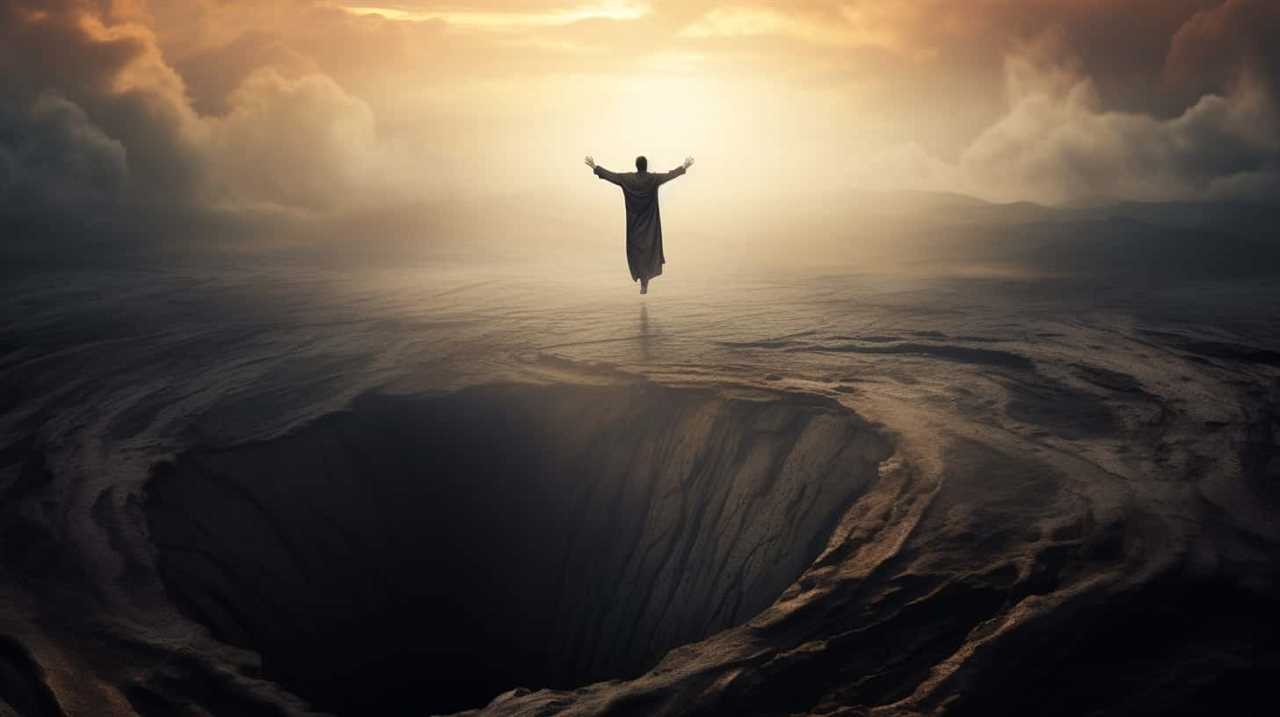
The Future of Technology
Our exploration of the philosophy of technology takes us into the realm of the future, where we envision the transformative potential of technology in shaping our lives. As we look ahead, it’s important to consider the future advancements that await us and the concept of technological singularity.
Here are four thought-provoking insights about the future of technology:
- Unprecedented Connectivity: The future will bring us even closer together, connecting people and devices in ways we previously could only imagine. With advancements in Internet of Things (IoT) technology, our homes, cities, and even our own bodies will be seamlessly integrated into a vast network of information.
- Artificial Intelligence (AI) Revolution: As AI continues to advance, machines will possess the ability to think, learn, and even surpass human intelligence. The implications of this technological singularity are both exciting and daunting, as it raises questions about the nature of consciousness, ethics, and the role of humanity in a world dominated by intelligent machines.
- Boundless Innovation: The future will see exponential growth in innovation, as emerging technologies such as virtual reality, nanotechnology, and biotechnology push the boundaries of what’s possible. We can expect groundbreaking discoveries and revolutionary solutions to some of humanity’s most pressing challenges.
- Ethical Considerations: With great power comes great responsibility. As technology evolves, it’s crucial to address the ethical implications that arise. We must navigate issues such as privacy, security, and the equitable distribution of resources, ensuring that our future advancements benefit all of humanity.
The future of technology holds immense promise, but it also demands our careful consideration and thoughtful approach. Only by exploring the possibilities and addressing the challenges can we ensure that technology continues to serve as a catalyst for positive change in our lives.

Frequently Asked Questions
How Does Philosophy of Technology Differ From Philosophy of Science?
The philosophy of technology differs from the philosophy of science in that it focuses on the ethical and societal implications of technological advancements, while the philosophy of science examines the nature and methods of scientific inquiry. Despite their differences, both fields explore the relationship between humanity and knowledge.
What Are the Major Ethical Concerns Surrounding the Use of Artificial Intelligence in Technology?
We must address the ethical concerns surrounding the use of artificial intelligence in technology. The potential for harm and the need for accountability demand our attention as we navigate the uncharted waters of innovation.
How Do Philosophical Perspectives on Human-Machine Interaction Affect the Development and Design of Technological Systems?
Philosophical perspectives on human-machine interaction have profound implications for the ethical considerations in the development and design of technological systems. Understanding the complex dynamics of the human-machine relationship is crucial for fostering innovation and addressing societal concerns.
What Are the Philosophical Implications of Technological Progress and Innovation on Society?
The ethical implications and social consequences of technological progress and innovation on society are vast. As we push the boundaries of what is possible, we must critically examine the impact on our values, relationships, and overall well-being.
How Does the Philosophy of Information Technology Inform Our Understanding of the Digital Age and Its Impact on Human Existence?
The philosophy of technology plays a crucial role in understanding the digital age and its impact on human existence. It provides insights into the ethical, social, and cultural implications of information technology, guiding us towards a more informed and thoughtful approach to innovation.

Conclusion
As we delve into the philosophical realm of technology, we uncover a rich tapestry of ideas and perspectives that challenge our understanding of the world.
From contemplating the nature of technology to examining the ethical implications of human-machine interaction, these quotes invite us to reevaluate our relationship with the ever-evolving landscape of innovation.
Just as technology has the power to shape our lives, these philosophical musings have the potential to ignite a spark of introspection and inspire us to navigate the future with wisdom and curiosity.
Lauren’s talent in writing is matched by her passion for storytelling. Her love for books and deep understanding of culture and entertainment add a distinct flavor to her work. As our media and press contact, Lauren skillfully bridges the gap between afterQuotes and the broader media landscape, bringing our message to a wider audience.
Artists Quotations
Why Did Celebrated Artists Embrace Resilience? Their Quotes Revealed
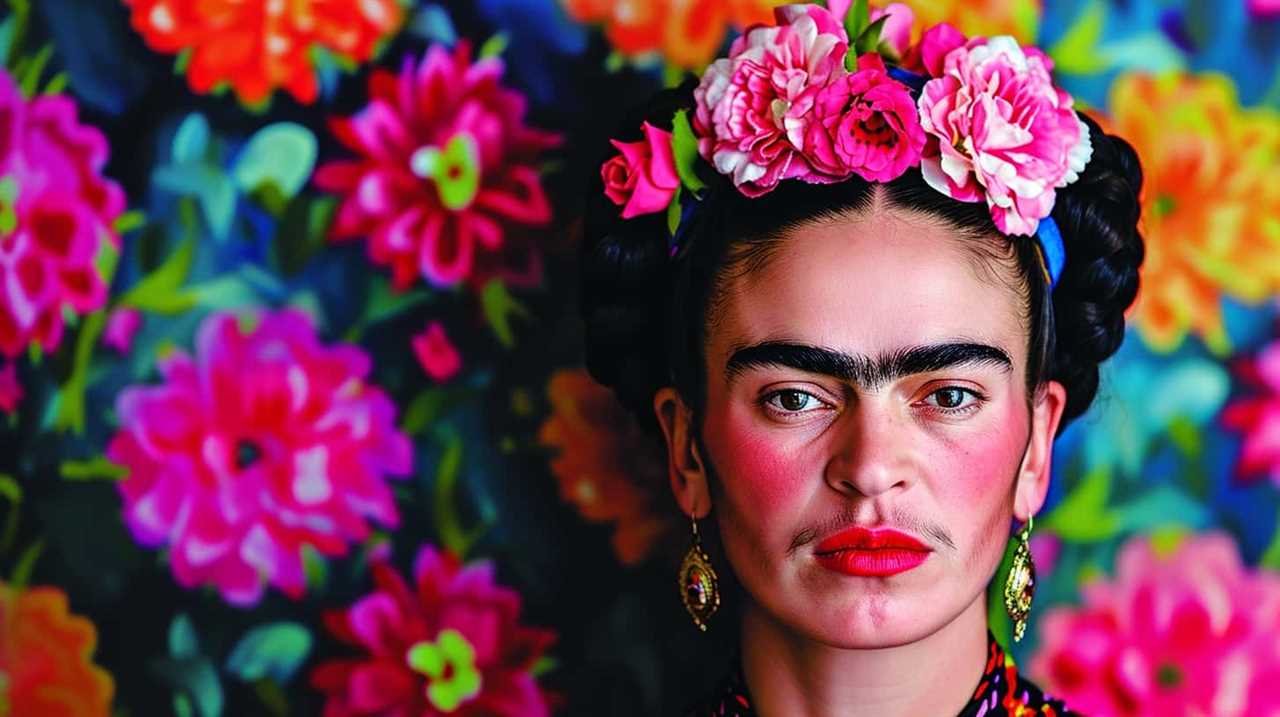
As we delve into the lives of renowned artists and their extraordinary perseverance, we reveal the underlying complexities of their creative paths. By examining their profound words, we achieve a deep comprehension of the reasons behind these artists’ decision to embody resilience in times of adversity.
Symbolizing their indomitable spirit and unwavering commitment to their craft, their words reveal the mastery they desired and the determination that propelled them forward. From Picasso’s perspective on overcoming obstacles to Frida Kahlo’s inner strength in art, and from Van Gogh’s unwavering determination amid adversity to Dali’s surreal resilience in his artistic journey, we delve into the minds of these renowned artists.
Join us as we uncover the secrets behind their enduring legacies and the inspiration they offer to those seeking their own artistic mastery.
Key Takeaways
- Artists like Picasso, Kahlo, Van Gogh, Dali, and O’Keeffe embraced resilience to overcome challenges in their artistic journeys.
- These artists believed in constant growth, adaptation, and pushing boundaries to evolve and transform their art.
- Their impact and influence on the art world is lasting, inspiring artists and art enthusiasts worldwide.
- Through their personal experiences, these artists found resilience in embracing pain, trauma, and societal norms, using art as a transformative power.
Picasso’s Perspective on Overcoming Challenges
In overcoming challenges, Picasso believed in embracing constant growth and adaptation. Throughout his career, Picasso’s artistic evolution was marked by a relentless pursuit of innovation and experimentation. He constantly pushed the boundaries of traditional art forms, challenging the status quo and redefining the possibilities of artistic expression.
Picasso’s ability to adapt and evolve can be seen in his various artistic periods. From the Blue Period, characterized by melancholic and somber tones, to the Cubist movement, where he fragmented objects and depicted them from multiple perspectives, Picasso’s artistic style constantly evolved and transformed.
One of the key factors that influenced Picasso’s artistic evolution was his exposure to different cultures and art forms. His travels and interactions with artists from around the world opened his eyes to new techniques and perspectives, which he incorporated into his own work. Picasso was never afraid to embrace change, and he believed that it was through constant growth and adaptation that artists could truly reach their full potential.
In contrast to Picasso’s focus on artistic evolution, another renowned artist, Frida Kahlo, found solace and inspiration in her personal struggles. Kahlo’s art was deeply intertwined with her experiences of pain, physical ailments, and emotional turmoil. Through her art, she expressed her innermost emotions and confronted her personal demons.
Kahlo’s art served as a means of catharsis, allowing her to find healing and empowerment in the face of adversity. Her paintings often depicted her physical and emotional pain, as well as her Mexican heritage and cultural identity. Kahlo’s art resonated with many individuals who saw themselves reflected in her struggles and triumphs.
Both Picasso and Kahlo exemplify the power of art in overcoming challenges. While Picasso embraced constant growth and adaptation, Kahlo drew strength from her personal struggles. Their unique approaches demonstrate that there’s no one-size-fits-all method for overcoming obstacles. Instead, it’s through embracing our own experiences and utilizing our artistic abilities that we can find resilience and create meaningful works of art.
Frida Kahlo’s Inner Strength in Art
While Picasso focused on artistic evolution, Frida Kahlo, on the other hand, drew strength from her personal struggles in her art. Frida Kahlo’s artistic inspiration stemmed from the profound impact of pain in her life. Her paintings were a reflection of her innermost emotions and experiences, allowing her to find solace and resilience in her artwork.
Kahlo’s art was deeply influenced by the physical and emotional pain she endured throughout her life. From a young age, she suffered from a multitude of health issues, including polio and a near-fatal bus accident that left her with lifelong physical disabilities. These experiences shaped her perception of the world and became a central theme in her art.
Kahlo’s paintings often depicted her physical and emotional pain, presenting a raw and honest portrayal of her experiences. Through her art, she found a way to express her emotions and confront her struggles head-on. Her work served as a form of catharsis, allowing her to process her pain and transform it into something beautiful and meaningful.
Van Gogh’s Determination Amid Adversity
Van Gogh’s determination to create art remained unwavering despite facing numerous adversities. His mental health struggles were well-documented, as he battled with depression, anxiety, and even episodes of psychosis. However, these challenges did not deter him from pursuing his artistic vision. In fact, it was during these difficult times that he produced some of his most iconic works, such as "Starry Night" and "The Potato Eaters."
| Van Gogh’s Mental Health Struggles | Picasso’s Artistic Evolution |
|---|---|
| Van Gogh’s mental health issues were a constant presence in his life, affecting both his personal well-being and artistic expression. | Picasso’s artistic evolution can be traced through different periods, each marked by distinct styles and subject matters. |
| Despite his struggles, Van Gogh used art as a form of therapy, pouring his emotions onto the canvas. His vibrant use of color and expressive brushwork reflected his inner turmoil. | Picasso’s early works were heavily influenced by the Blue and Rose periods, characterized by melancholic and introspective themes. Later, he embraced Cubism, revolutionizing the way art was perceived. |
| Van Gogh’s commitment to his craft was unwavering, even in the face of rejection and financial hardships. He continued to paint prolifically, producing over 2,000 artworks in just a decade. | Picasso’s artistic evolution was driven by a constant desire to push boundaries and challenge traditional artistic norms. His experimentation with different styles and mediums showcased his versatility and innovative spirit. |
| Van Gogh’s determination and resilience in the face of adversity continue to inspire artists and art enthusiasts worldwide. His ability to find solace and purpose in art serves as a testament to the transformative power of creativity. | Picasso’s artistic evolution serves as a reminder that artists are not bound by one style or subject matter. Instead, they have the freedom to explore and reinvent themselves, constantly pushing the boundaries of their own creativity. |
Van Gogh’s unwavering determination to create art, despite his mental health struggles, is a testament to his resilience and passion for his craft. His ability to find solace and purpose in art serves as an inspiration to artists and art enthusiasts worldwide. Similarly, Picasso’s artistic evolution showcases the transformative power of creativity and the freedom artists have to explore and reinvent themselves. Both artists remind us that even in the face of adversity, the pursuit of art can be a source of strength and growth.
Dali’s Surreal Resilience in Artistic Journey
Dali’s artistic determination and the enduring influence of surrealism are key points to consider when discussing his surreal resilience in his artistic journey.
Despite facing criticism and controversy, Dali remained steadfast in his commitment to pushing boundaries and challenging traditional artistic conventions.
Surrealism, with its emphasis on the subconscious and irrational, continues to captivate audiences and inspire artists to this day.
Salvador’s Artistic Determination
We admire Salvador for his unwavering determination in his surreal artistic journey. His unique artistic style and impact on surrealism are testament to his resilience and unwavering dedication. Here are three aspects of Salvador’s artistic determination that stand out:
- Bold and imaginative imagery: Salvador’s artwork was characterized by dreamlike and bizarre imagery that pushed the boundaries of conventional art. His ability to create fantastical and unsettling scenes captivated audiences and challenged their perceptions of reality.
- Attention to detail: Despite the fantastical nature of his work, Salvador paid meticulous attention to detail. Every brushstroke and element in his paintings served a purpose, contributing to the overall composition and narrative.
- Persistence in the face of criticism: Salvador faced criticism and rejection throughout his career, yet he remained steadfast in his artistic vision. He defied societal norms and pushed the boundaries of art, refusing to conform to expectations.
Salvador’s determination to create art that was truly groundbreaking and thought-provoking continues to inspire artists and art enthusiasts alike.
Surrealism’s Enduring Influence
The enduring influence of surrealism can be seen in the resilience of celebrated artists like Salvador Dali throughout their artistic journeys.
Surrealism, a movement that emerged in the early 20th century, has had a profound impact on contemporary art. Its exploration of the subconscious mind and its ability to create dreamlike and fantastical imagery continue to inspire artists today.
Dali, known for his iconic and often bizarre paintings, embraced the tenets of surrealism in his work. His ability to tap into the depths of the subconscious mind allowed him to create visually stunning and thought-provoking pieces.
Dali’s surreal resilience in his artistic journey demonstrates the lasting impact of surrealism on the art world, as well as its ability to push boundaries and challenge traditional artistic norms.
O’Keeffe’s Resilience in the Face of Criticism
O’Keeffe’s resilience in the face of criticism is evident in her enduring artistic vision and her ability to overcome artistic challenges.
Despite facing criticism for her unique style and subject matter, O’Keeffe remained committed to her artistic vision, creating iconic works that have stood the test of time.
Through her determination and perseverance, she not only proved her critics wrong but also paved the way for future generations of artists to embrace their own unique voices.
O’keeffe’s Enduring Artistic Vision
Throughout her career, Georgia O’Keeffe consistently demonstrated her enduring artistic vision, despite facing criticism. Her ability to persevere and stay true to her artistic vision left an indelible mark on the art world and paved the way for future female artists.
O’Keeffe’s artistic legacy is defined by three key elements:

- Bold use of color: O’Keeffe’s vibrant and intense color palette captured the essence of her subjects, whether it was the delicate petals of a flower or the majestic landscapes of the Southwest. Her mastery of color allowed her to evoke emotions and create a sense of depth and dimension in her paintings.
- Unique perspective: O’Keeffe’s ability to see the extraordinary in the ordinary set her apart from her contemporaries. Whether it was zooming in on the intricate details of a flower or enlarging a landscape to fill the canvas, she brought a fresh and innovative perspective to her art.
- Symbolism and abstraction: O’Keeffe’s work often incorporated symbolism and abstraction, allowing viewers to interpret her paintings in their own unique way. By focusing on the essence of her subjects rather than their literal representation, she challenged traditional artistic conventions and opened up new possibilities for artistic expression.
Despite facing criticism and skepticism, O’Keeffe’s enduring artistic vision has had a profound impact on female artists, inspiring them to embrace their own unique perspectives and push boundaries in their work. Her unwavering dedication to her art serves as a reminder of the importance of resilience and staying true to one’s artistic vision.
Transitioning into the subsequent section about ‘overcoming artistic challenges’, it’s essential to explore how O’Keeffe’s resilience enabled her to overcome the obstacles that she encountered throughout her career.
Overcoming Artistic Challenges
In the face of criticism, we persevered and embraced resilience, overcoming artistic challenges.
O’Keeffe, a celebrated artist known for her unique and vibrant paintings, faced her fair share of obstacles throughout her career. Despite criticism from art critics and societal expectations, she remained committed to her artistic vision and found inspiration through adversity.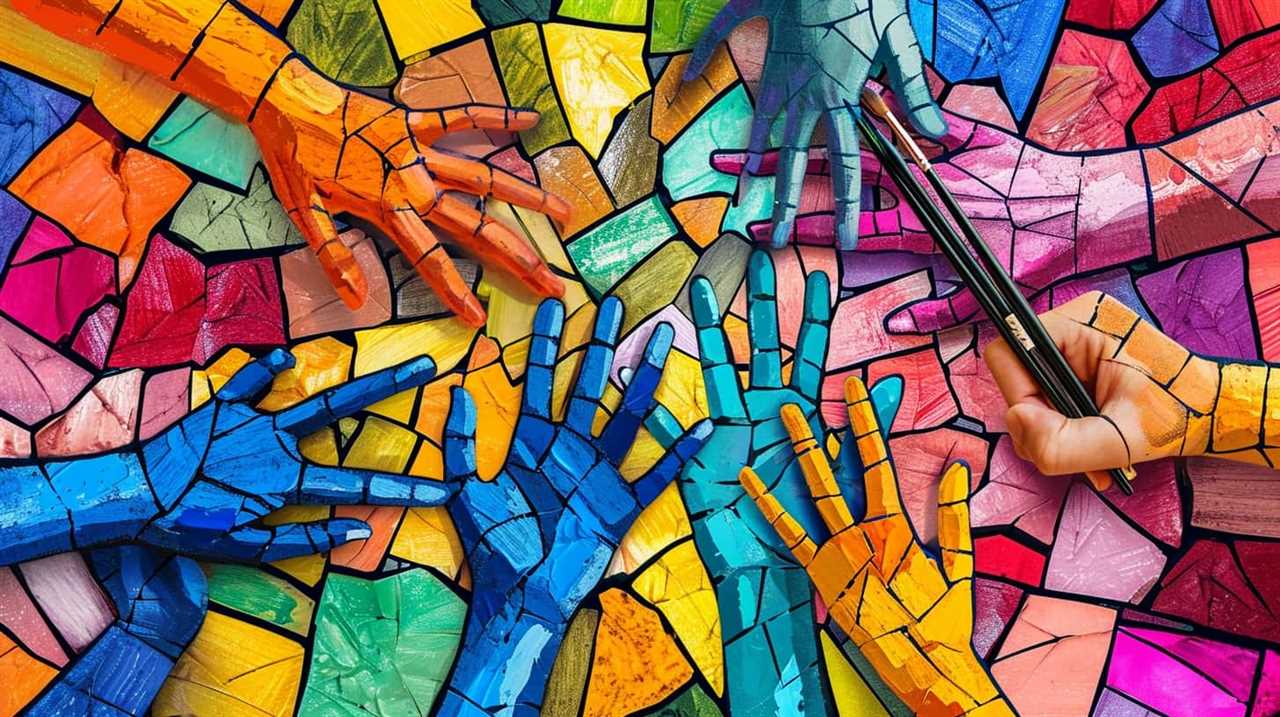
O’Keeffe’s ability to overcome creative obstacles and push through challenges is what set her apart as an artist. She once stated, ‘I have already settled it for myself, so flattery and criticism go down the same drain and I’m quite free.’ This quote exemplifies her resilience in the face of criticism, her unwavering belief in her art, and her ability to find motivation even in the most challenging times.
O’Keeffe serves as an inspiration for artists everywhere, reminding us to stay true to our artistic visions and persevere through adversity.
Basquiat’s Resilience in Breaking Barriers
Basquiat’s resilience in breaking barriers transformed the art world. His impact on contemporary art is undeniable, leaving behind a lasting legacy and influence that continues to resonate today. Here are three key aspects of Basquiat’s resilience that propelled him to break through the boundaries of the art world:
- Unconventional Expression: Basquiat’s artistic style challenged traditional norms and conventions. His use of bold colors, expressive brushstrokes, and incorporation of graffiti elements created a unique visual language that defied categorization. By embracing his individuality and refusing to conform, Basquiat paved the way for a new wave of artistic expression.
- Cultural Commentary: Basquiat’s art was deeply rooted in his experiences as a black artist in America. Through his work, he fearlessly tackled issues of race, identity, and societal injustices. By giving a voice to marginalized communities, Basquiat challenged the status quo and forced viewers to confront uncomfortable truths.
- Collaborative Spirit: Basquiat’s resilience wasn’t just evident in his solo work, but also in his collaborations. He often collaborated with other artists, musicians, and writers, blurring the boundaries between different art forms. This collaborative spirit not only expanded his artistic horizons but also fostered a sense of community and collective resilience within the art world.
In breaking barriers, Basquiat paved the way for a new era of artistic possibilities. His legacy and influence continue to inspire artists to embrace resilience and push the boundaries of creativity.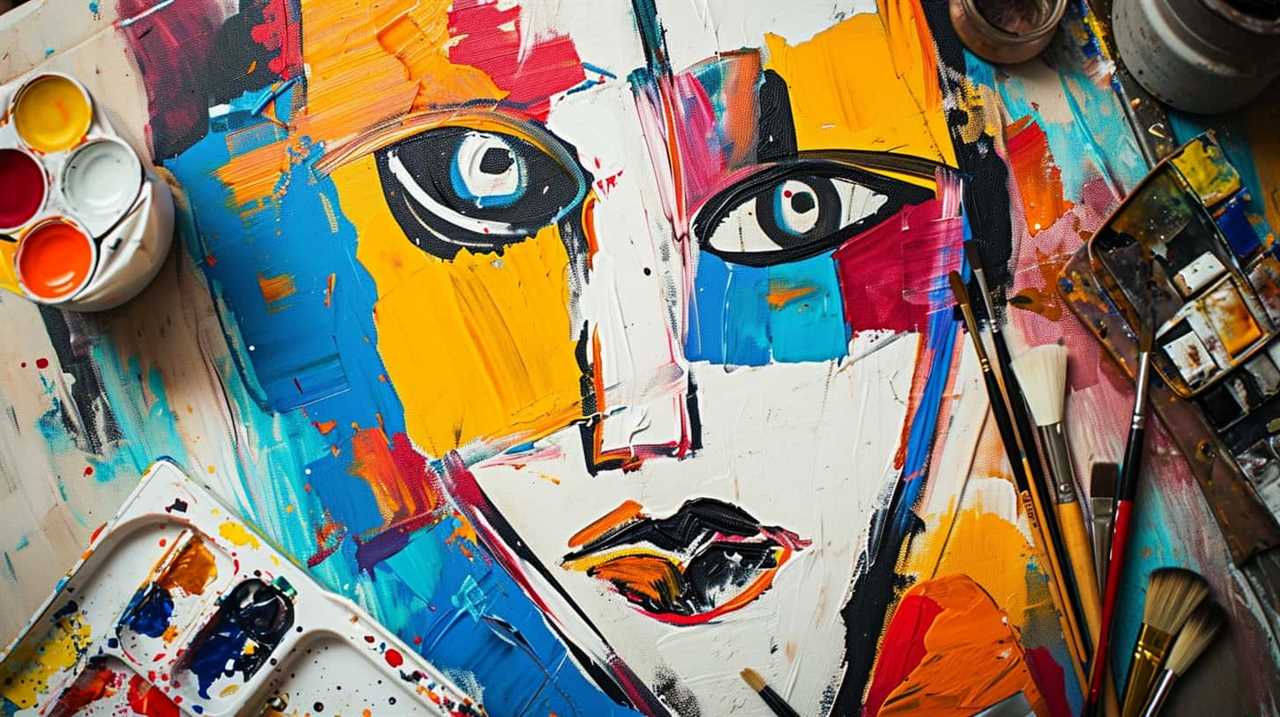
Kahlo’s Resilience in Embracing Pain
Kahlo’s unwavering embrace of her pain defined her artistic journey. Through her use of symbolism, she transformed her physical and emotional suffering into powerful works of art. Kahlo’s paintings are filled with symbols that represent her personal experiences and struggles, such as the broken column symbolizing her shattered spine and the thorny vines symbolizing her emotional turmoil. These symbols not only serve as a means of self-expression but also allow viewers to connect with her pain on a deeper level.
Kahlo’s resilience in embracing her pain has had a profound influence on contemporary artists. Many artists today continue to explore themes of pain, trauma, and resilience in their work, inspired by Kahlo’s ability to transform her own pain into art. Her bold and honest approach to depicting her physical and emotional suffering has challenged societal norms and paved the way for artists to address difficult and uncomfortable subjects.
Transitioning into the subsequent section about Warhol’s resilience in the pop art movement, it’s important to note that while Kahlo’s art focused on personal pain, Warhol’s resilience was manifested in his ability to challenge traditional notions of art and embrace popular culture.
Warhol’s Resilience in the Pop Art Movement
We admired Warhol’s resilience as he revolutionized the art world through his bold embrace of popular culture in the Pop Art movement. Warhol’s influence on pop culture can’t be overstated, as his iconic art style continues to inspire and captivate audiences to this day.
Here are three aspects of Warhol’s resilience that made him a trailblazer in the art world:
- Embracing mass production: Warhol challenged the traditional notion of art by incorporating everyday objects and images into his work. His use of screen printing techniques allowed him to produce multiple copies of his artworks, blurring the boundaries between high and low art.
- Celebrating consumerism: Warhol’s art celebrated the consumer culture of post-war America. Through his iconic images of Campbell’s soup cans, Coca-Cola bottles, and celebrities like Marilyn Monroe, he commented on the power of advertising and the commodification of popular culture.
- Embracing controversy: Warhol’s art often courted controversy and pushed boundaries. His provocative and sometimes controversial subjects challenged societal norms and forced viewers to confront uncomfortable truths about fame, consumerism, and the impact of mass media.
Warhol’s resilience in the face of criticism and his willingness to embrace new ideas and challenge the status quo cemented his place as one of the most influential artists of the 20th century.
Transitioning into the subsequent section about Monet’s resilience in capturing light and nature…
Monet’s Resilience in Capturing Light and Nature
Transitioning from Warhol’s resilience in the Pop Art movement, Monet’s resilience in capturing light and nature is equally remarkable. Monet, a French Impressionist painter, was known for his ability to beautifully depict the play of light and its effects on nature. His art was a reflection of his deep appreciation for capturing nature’s beauty and his artistic inspiration from light.

Monet’s paintings often featured landscapes, water lilies, and gardens, with an emphasis on the transient qualities of light. He would spend hours observing the changing colors and tones as the light shifted throughout the day. This meticulous attention to detail allowed him to create vivid and immersive scenes that transported viewers into the natural world.
To illustrate Monet’s incredible talent for capturing light and nature, let’s take a look at a table showcasing some of his most renowned works:
| Painting Title | Description |
|---|---|
| "Impression, Sunrise" | Depicts a hazy harbor scene with the sun rising |
| "Water Lilies" | Shows a serene pond with floating water lilies |
| "Haystacks" | Portrays haystacks at different times of the day |
Monet’s resilience in his artistic pursuit allowed him to create timeless masterpieces that continue to inspire and captivate audiences to this day. His ability to harness the power of light and convey the essence of nature through his brushstrokes is a testament to his unwavering dedication and artistic vision.
Frequently Asked Questions
How Did Picasso’s Perspective on Overcoming Challenges Influence His Artistic Style?
Picasso’s perspective on overcoming challenges greatly influenced his artistic style, leading to his artistic evolution and his immense influence on modern art. His ability to embrace resilience allowed him to experiment with different techniques and push the boundaries of traditional art.
What Personal Experiences Contributed to Frida Kahlo’s Inner Strength in Her Artwork?
Frida Kahlo’s inner strength in her artwork was shaped by her personal experiences. These experiences, such as her physical and emotional pain, served as a source of inspiration and influenced contemporary artists who admire her resilience.
How Did Van Gogh’s Determination Help Him Overcome the Adversity He Faced in His Life and Career?
Van Gogh’s determination played a vital role in overcoming the adversity he faced in his life and career. Despite his struggles with mental health, he channeled his emotions into his artistic techniques, creating masterpieces that continue to inspire and resonate with audiences today.
In What Ways Did Dali’s Surreal Resilience Shape His Artistic Journey?
Dali’s surreal resilience played a significant role in shaping his artistic journey. His ability to embrace and overcome adversity allowed him to push the boundaries of traditional art, creating unique and thought-provoking works that continue to captivate audiences.
How Did O’keeffe’s Resilience in the Face of Criticism Impact Her Artistic Development and Success?
O’Keeffe’s resilience in the face of criticism greatly impacted her artistic development and success. By not letting negative feedback deter her, she was able to stay true to her artistic vision and push boundaries, ultimately achieving mastery in her craft.
Conclusion
In conclusion, the celebrated artists discussed in this article demonstrate the power of resilience in the face of various challenges. Through their quotes and artistic journeys, Picasso, Kahlo, Van Gogh, Dali, O’Keeffe, Basquiat, Warhol, and Monet inspire us to embrace our own resilience.
As the adage goes, ‘What doesn’t kill you makes you stronger.’ These artists overcame adversity, criticism, and personal pain, ultimately leaving a lasting impact on the art world and reminding us of the strength that lies within us all.
Lauren’s talent in writing is matched by her passion for storytelling. Her love for books and deep understanding of culture and entertainment add a distinct flavor to her work. As our media and press contact, Lauren skillfully bridges the gap between afterQuotes and the broader media landscape, bringing our message to a wider audience.
-

 Funerals Quotations3 months ago
Funerals Quotations3 months agoSoothing Hope Quotes for Funeral Reflections
-

 TV Shows Quotations2 months ago
TV Shows Quotations2 months agoTop 4 Unforgettable TV Drama Monologues
-

 Movies Quotations4 weeks ago
Movies Quotations4 weeks agoUnforgettable Cult Movie Quotes: A Compiled List
-

 Education and Knowledge1 week ago
Education and Knowledge1 week agoUnlock Success with the Best Study Motivation Quotes
-

 Travel and Exploration Quotations3 weeks ago
Travel and Exploration Quotations3 weeks agoWisdom on Waves: Notable Maritime Explorer Quotations
-

 Education and Knowledge1 week ago
Education and Knowledge1 week agoBest Study Quotes: Unlock Student Potential!
-

 Military Quotations2 months ago
Military Quotations2 months agoInspiring Military Quotations for Strength & Honor
-

 Travel and Exploration Quotations3 weeks ago
Travel and Exploration Quotations3 weeks agoWhy Travel Teaches Unforgettable Life Wisdom?


















